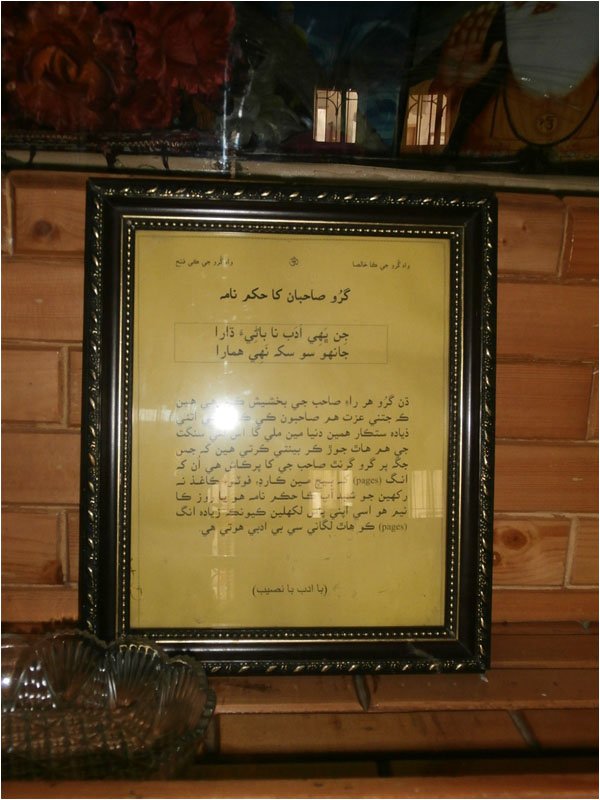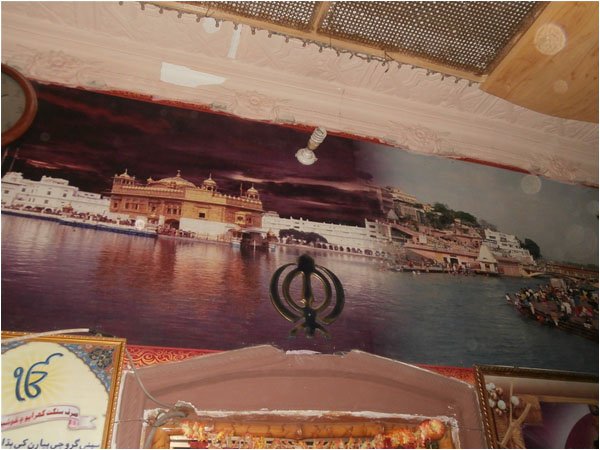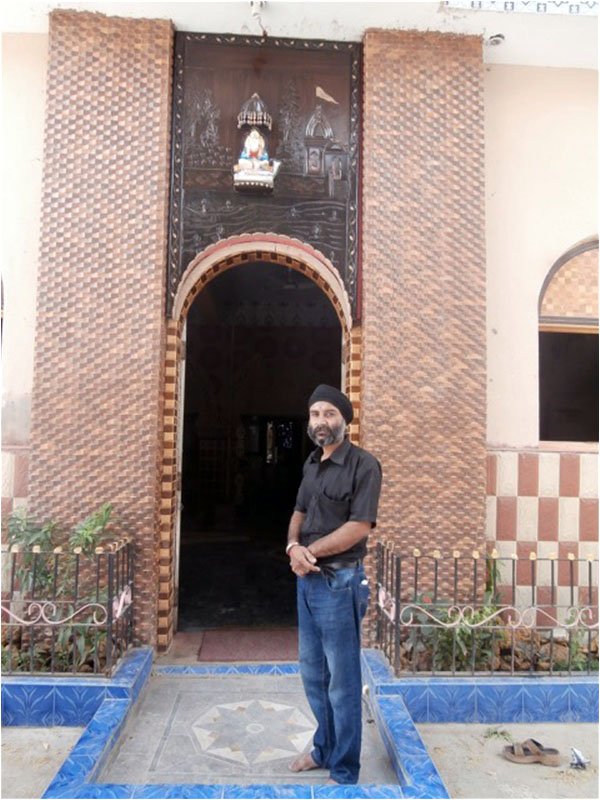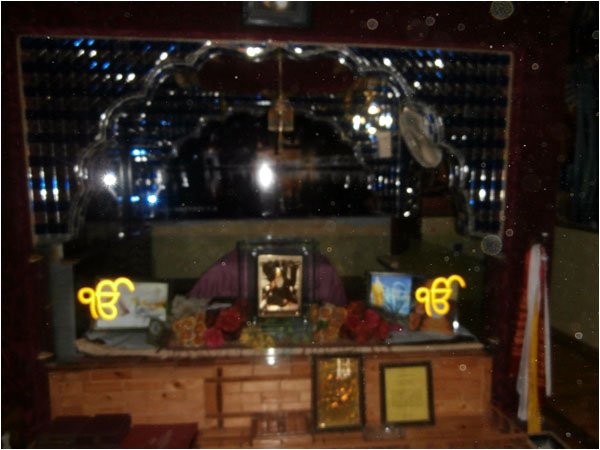Lal Saen’s temple
by Zahida Rehman Jatt
The Friday Time : 31 Jul 2015
Saint Udero Lal, Khawaja Khizar and Guru Granth Sahib are revered in a Mirpurkhas temple where religions still coexist. Zahida Rehman Jatt captures the images

Guru Nanak (right) and Udero Lal (left)
Sindh has a rich history that dates back to the times of Mohenjo Daro. The land bears witness to the prosperity of people from innumerable ethnicities, cultures and religions all of whom have added to the multicultural and pluralistic Sindhi society as we see it today. While the rest of the world has been engulfed in sectarian wars, religious strife and in communal hatred, the land of Sufis still has some places where religions peacefully coexist. One of them is an old temple in Mirpurkhas city.
This city was built by Mir Ali Murad Talpur in 1806 and had remained a seat of Manikani Talpurs. Because of the opportunities that it offered, it was largely habituated by Hindu businessmen before Partition. These businessmen were wealthy and wielded considerable influence there. Although, most of the Hindus left at the time of Indo-Pak division, there still is considerable Hindu population that resides within the city. The city’s Hindus have built a number of temples. Some of these are relatively new but a few older ones also exist.
Opposite the Session Court and Baldia market, there is a building called Hindu Panchayat, Mirpurkhas. It has a welfare hospital, a place for langar (free food) for the poor and a temple in its premises. The temple’s main deity is Saint Udero Lal, also called Lal Saen, who is revered as an incarnation of river Indus by Sindhi Hindus and as Khawaja Khizar by Muslims. But a striking feature of this temple is Guru Granth Sahib, kept in the temple along with photos of Baba Guru Nanak and other Sikh Gurus.

A text within the temple carrying the message of Sikh gurus
The land of Sufis still has some places where religions peacefully coexist
While most of the people think that Sikhism is mostly practiced and followed in areas of Punjab and Haryana, the adherents of this faith can also be found in the land of river Indus. When I did some research on how the elements of Sikh religion came in Sindh, I got very interesting answers.
According to Mr. Zulfiqar Kalhoro, a senior anthropological researcher, “After the demise of Baba Guru Nanak, the founder of Sikh faith, his son Baba Sri Chand came to Sindh and preached Sikhism among the people and made many followers. Now, the people who follow him are called Nanak Panthis. Another similar sect that follows the last Guru Gobind Singh is called Udasi Panthis”.

The sacred pond along with the Khanda sahib symbol
Udero Lal is revered as an incarnation of river Indus by Sindhi Hindus and as Khawaja Khizar by Muslims
When I visited the temple, a Punjabi Bhajjan (a devotional song) was being played on the tape-recorder. The main hall of the temple was adorned with photos of Sikh Gurus, the Holy temple at Amritsar along with the sacred pond called Sarovar Sahib and the Sikh symbol called Khanda Sahib.
The temple is more than a hundred years old but it has now been completely renovated. It has six rooms each devoted to a God or Goddess. There is a large room, where Granth Sahib is placed, with all of the shimmering regalia. Another small section is Granth Sahib’s resting place, which is called Asthan Sahib. There is a small podium nearby with a harmonium and a microphone. People from various sections of city come every evening to listen to Keertan (recitation of the sacred text from Granth Sahib).

Suresh Kumar Lohana standing near the entrance
“After the demise of Baba Guru Nanak, his son Baba Sri Chand came to Sindh”
The temple has teakwood façade with an icon of Saint Udeo Lal sitting on Palla fish in river Indus. Inside the temple, renovation work has been in progress and there are wooden panels on which different episodes of the lives of Baba Guru Nanak and Saint Udero Lal are carved. The temple is looked after by the Hindu Panchayat and is in very good condition.
I met with Mr. Suresh Kumar Lohana who is the guardian of the temple and also works as a teacher. He wore a black turban, a Karra or steel-band and had a small beard. He told me: “We are not Sikhs but still we have immense respect for Granth Sahib and Sikh Gurus. Almost all the upper caste Hindus who live in Sindh now, revere Granth Sahib and Gurus along with Bhagvad Gita and Hindu Gods and Goddesses”. He also told me that some of the Sindhi Hindus make pilgrimages to Gurdwaras in Hassan Abdal, Lahore and Nankana Sahib but he has had no opportunity to go there yet.

The poster showing images of Baba Guru Nanak and other gurus

Granth Sahib
“We are not Sikhs but still we have immense respect for Granth Sahib”
This temple exemplifies how the syncretic elements of religions can help to bring people from different faiths together without breeding any hatred towards each other. I think this is the most important message that we can give our masses. The message should also be promoted at state level.